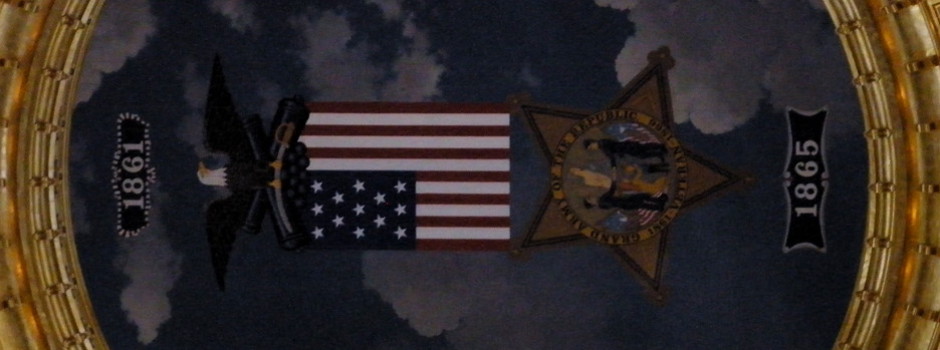Yet another website redesign takes away something inherently obvious in the name of … what?
After rising to dominance in the late 2000s, Google Maps has steadily grown fat and happy in the 2010s, and by “fat” I mean resource-hogging, shiny-for-shiny’s-sake and sometimes downright sloppy on accuracy*. It dominated the new and growing mobile Internet until Apple Maps overcame laughingstock status and roped in iPhone users. While Street View is a great component, the actual map-drawing part of the website has gone downhill. Meanwhile, depending on your perspective, Mapquest was either happily un-messed-with or left to wither out of benign neglect. That changed this fall, when a “new” Mapquest was unveiled. The new version has a different typeface, a really stupid logo, and one unfortunate departure from an interface that had been around since the 20th Century.
The new Mapquest doesn’t show county lines until a very small zoom level. Displaying county lines was one of MQ’s strengths over Google — since Google doesn’t show county lines at all — and the new designers tossed it. Whereas county lines were obviously visible on the old version at the 10-mile scale, the new version won’t show them until the 1-mile scale, and then the line is faintly dashed with the county names in small type.
(Side rant: WHY ARE WEB DESIGNERS USING GRAY TEXT EVERYWHERE STOP IT RIGHT NOW ESPECIALLY WHEN IT’S LIGHT GRAY ON DARK GRAY WHAT POSSESSED YOU TO THINK THAT IS GOOD DESIGN)
(I needed that.)
Anyway, somehow, in exchange for not showing us county lines, the new Mapquest will show us…township names. Yes, township names, styled just like every actual town name on the map. In northern Sac County, for example, at the 3-mile zoom you see “Eureka”, “Eden”, “Nemaha”, and “Douglas” all in a row — except the thing is, Nemaha is the only town of the four and it’s so close to the center of Delaware Township that that name is hidden. But just looking at the map you couldn’t tell that, just as you couldn’t tell there are not towns or even long-extinct villages named “Boyer Valley” and “Clinton” on soon-to-be-rerouted US 71 south of Early.
The new Mapquest also switched to icons for triggering map and satellite views, since apparently using the words “Map” and “Satellite” were too obvious. To get satellite view now, you click on the globe below the plus/minus arrows. That switches the view, and also makes every highway shield square — every highway shield. I have no idea why it does that, especially since the map goes to the trouble of rendering state highways with the actual shield design (another nice thing MQ does that Google doesn’t).
The old version of Mapquest is still active, at classic.mapquest.com (with a much less ridiculous logo), but as is so often the case, the plug could be pulled on that at any time.
*The next time you look at parts of Iowa on Google Maps, notice how many highways that were decommissioned in 2003 are still alive and well.
